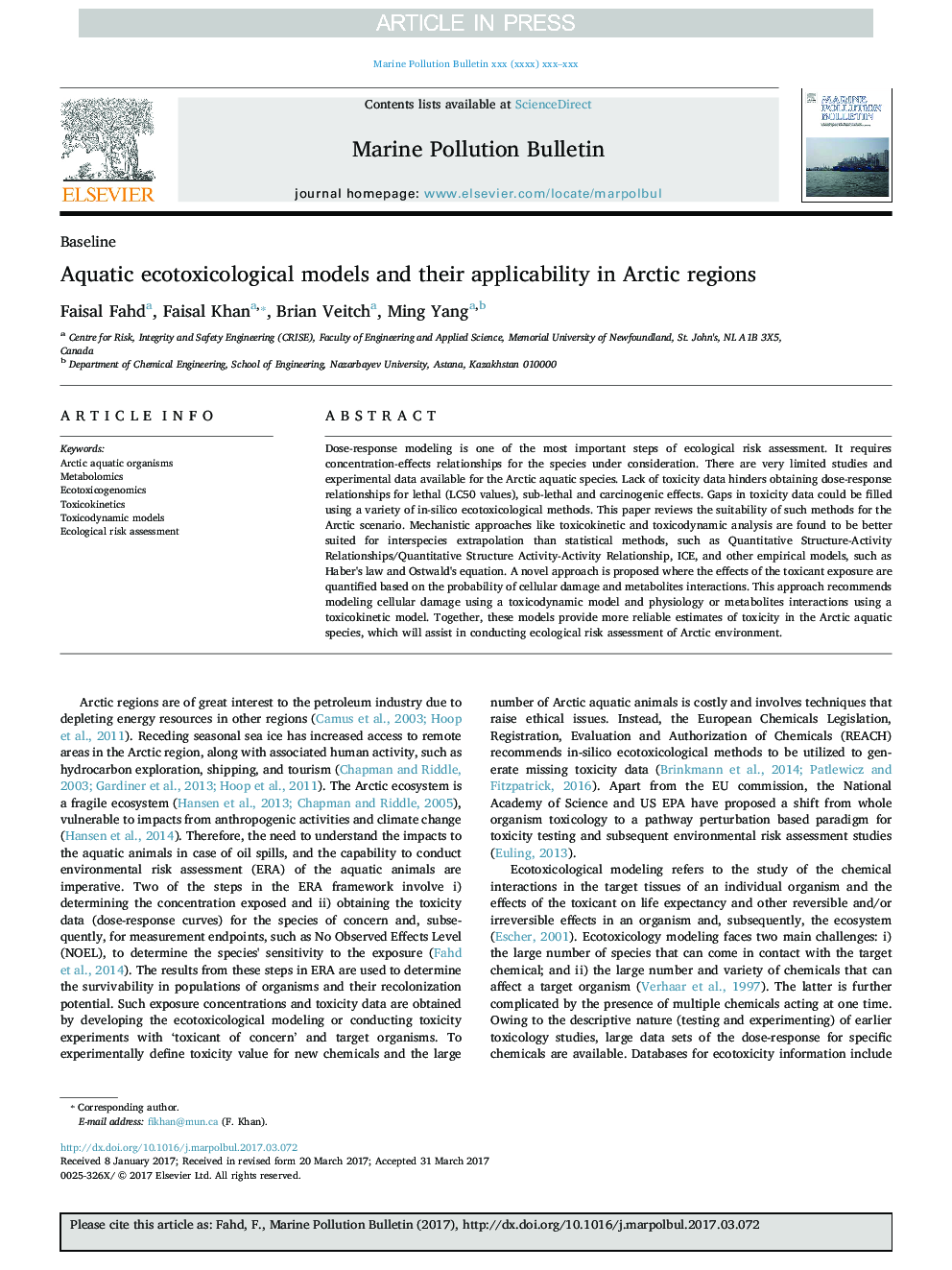| کد مقاله | کد نشریه | سال انتشار | مقاله انگلیسی | نسخه تمام متن |
|---|---|---|---|---|
| 5757691 | 1622717 | 2017 | 10 صفحه PDF | دانلود رایگان |
عنوان انگلیسی مقاله ISI
Aquatic ecotoxicological models and their applicability in Arctic regions
ترجمه فارسی عنوان
مدل اکوتوکسیکولوژی آبزی و کاربرد آن در مناطق قطب شمال
دانلود مقاله + سفارش ترجمه
دانلود مقاله ISI انگلیسی
رایگان برای ایرانیان
کلمات کلیدی
موضوعات مرتبط
مهندسی و علوم پایه
علوم زمین و سیارات
اقیانوس شناسی
چکیده انگلیسی
Dose-response modeling is one of the most important steps of ecological risk assessment. It requires concentration-effects relationships for the species under consideration. There are very limited studies and experimental data available for the Arctic aquatic species. Lack of toxicity data hinders obtaining dose-response relationships for lethal (LC50 values), sub-lethal and carcinogenic effects. Gaps in toxicity data could be filled using a variety of in-silico ecotoxicological methods. This paper reviews the suitability of such methods for the Arctic scenario. Mechanistic approaches like toxicokinetic and toxicodynamic analysis are found to be better suited for interspecies extrapolation than statistical methods, such as Quantitative Structure-Activity Relationships/Quantitative Structure Activity-Activity Relationship, ICE, and other empirical models, such as Haber's law and Ostwald's equation. A novel approach is proposed where the effects of the toxicant exposure are quantified based on the probability of cellular damage and metabolites interactions. This approach recommends modeling cellular damage using a toxicodynamic model and physiology or metabolites interactions using a toxicokinetic model. Together, these models provide more reliable estimates of toxicity in the Arctic aquatic species, which will assist in conducting ecological risk assessment of Arctic environment.
ناشر
Database: Elsevier - ScienceDirect (ساینس دایرکت)
Journal: Marine Pollution Bulletin - Volume 120, Issues 1â2, 15 July 2017, Pages 428-437
Journal: Marine Pollution Bulletin - Volume 120, Issues 1â2, 15 July 2017, Pages 428-437
نویسندگان
Faisal Fahd, Faisal Khan, Brian Veitch, Ming Yang,
